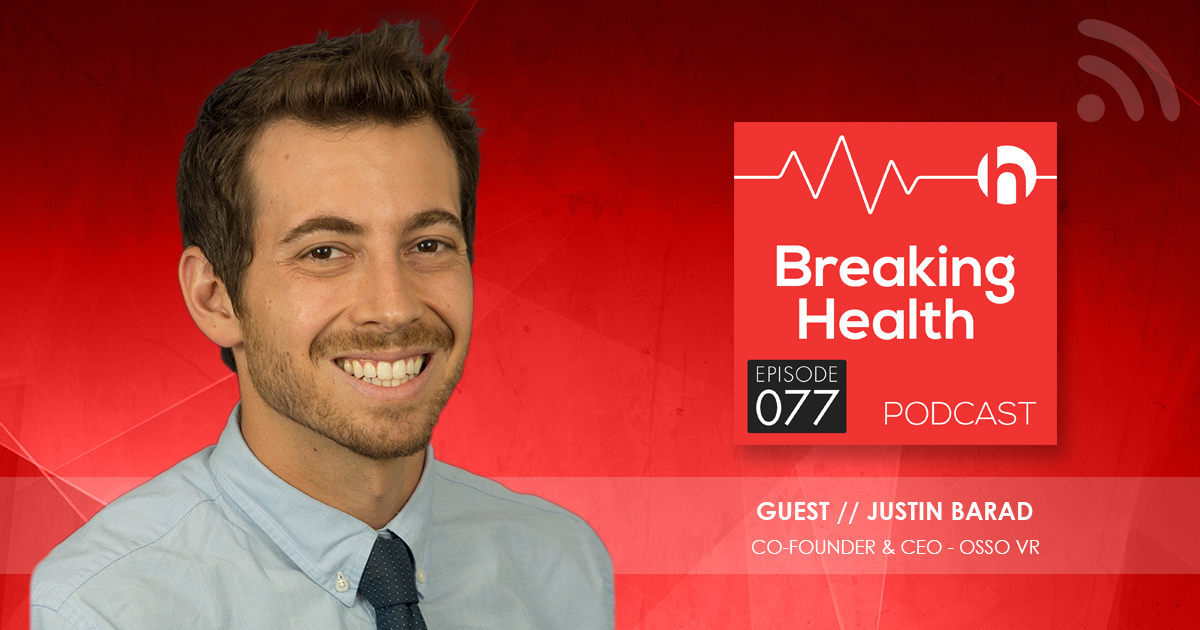Justin Barad Brings VR into OR Training
Early in his career as a pediatric orthopedic surgeon, Justin Barad got hold of a virtual realty (VR) headset and found himself in a Tuscan villa throwing around furniture. The experience may change the way doctors and surgeons learn their craft for decades to come.
As a young surgeon, Barad was frustrated by dry instruction manuals and time-consuming videos for learning how to implant medical devices in patients, which he humorously compares to building Ikea furniture for the first time. Kidding aside, the learning curve is steep, and traditional surgical training on cadavers costs hundreds of thousands of dollars and involves time away from patients and families to attend faraway courses, he explains.
What if, like his virtual trip to a Tuscan villa, VR could bring surgical training to the surgeons?
“I thought, wow, it’s a no brainer, I can’t wait till somebody does this,” Barad says. “And then I thought maybe I can do something.”
And that was the genesis of
Osso VR, of which 34-year-old Barad is co-founder and CEO.
With a VR headset he bought on Amazon and a discontinued hand controller he found on eBay, Barad built the prototype himself for a few hundred dollars. No stranger to tech, Barad worked in game development and coding at
Activision while still in high school and studied bioengineering in college.
Now, he and a team of medical pros and developers coming from companies such as
Electronic Arts, Microsoft, and
Nintendo have created VR software that allows orthopedic surgeons to train on virtual patients in real time. In just minutes, surgeons can practice techniques to implant medical devices that previously took many hours to learn, and early research studies show their skill-retention is much higher, Barad points out.
The response from all quarters, including the medical-device makers whose products Osso VR supports, has been explosive. Orthopedic surgeons, largely a skeptical group, have been receptive, Barad says, especially at conferences where he gives
hands-on demonstrations.
“Just put the headset on,” he tells them. Once they do, they’re impressed. “Until you put the headset on and get your hands behind the wheel, there’s no way to know what it’s going to be like.”
A hard sell to venture capital early on, the tables have flipped, Barad says. Now, investors are clamoring to fund the first-year company, which just secured
$2 million in seeding from SignalFire and Anorak Ventures. Barad projects the market for Osso VR’s products to be between $40 billion and $50 billion by 2020.
“Nobody even knew that this was a problem,” he says, “and now it’s on the verge of blowing up.”
Justin Barad
Founder & CEO
Osso VR
Early in Dr. Barad’s career, he fully intended to become a game developer, but when a family member became ill he decided to use his technology background to help people and moved toward medicine. With a strong interest in “serious gaming” and a first-hand understanding of the training challenges facing physicians, he co-founded Osso VR with a mission to democratize access to modern surgical techniques and improve patient safety.
In addition to managing his company, Dr. Barad is also a practicing orthopaedic surgeon with a Bioengineering degree from UC Berkeley, and an MD from UCLA where he graduated first in his class. He completed his residency at UCLA, and his fellowship was in pediatric orthopaedics at Harvard and Boston Children’s Hospital. Dr. Barad has also written for Medgadget, a popular medical technology site, for more than a decade.



